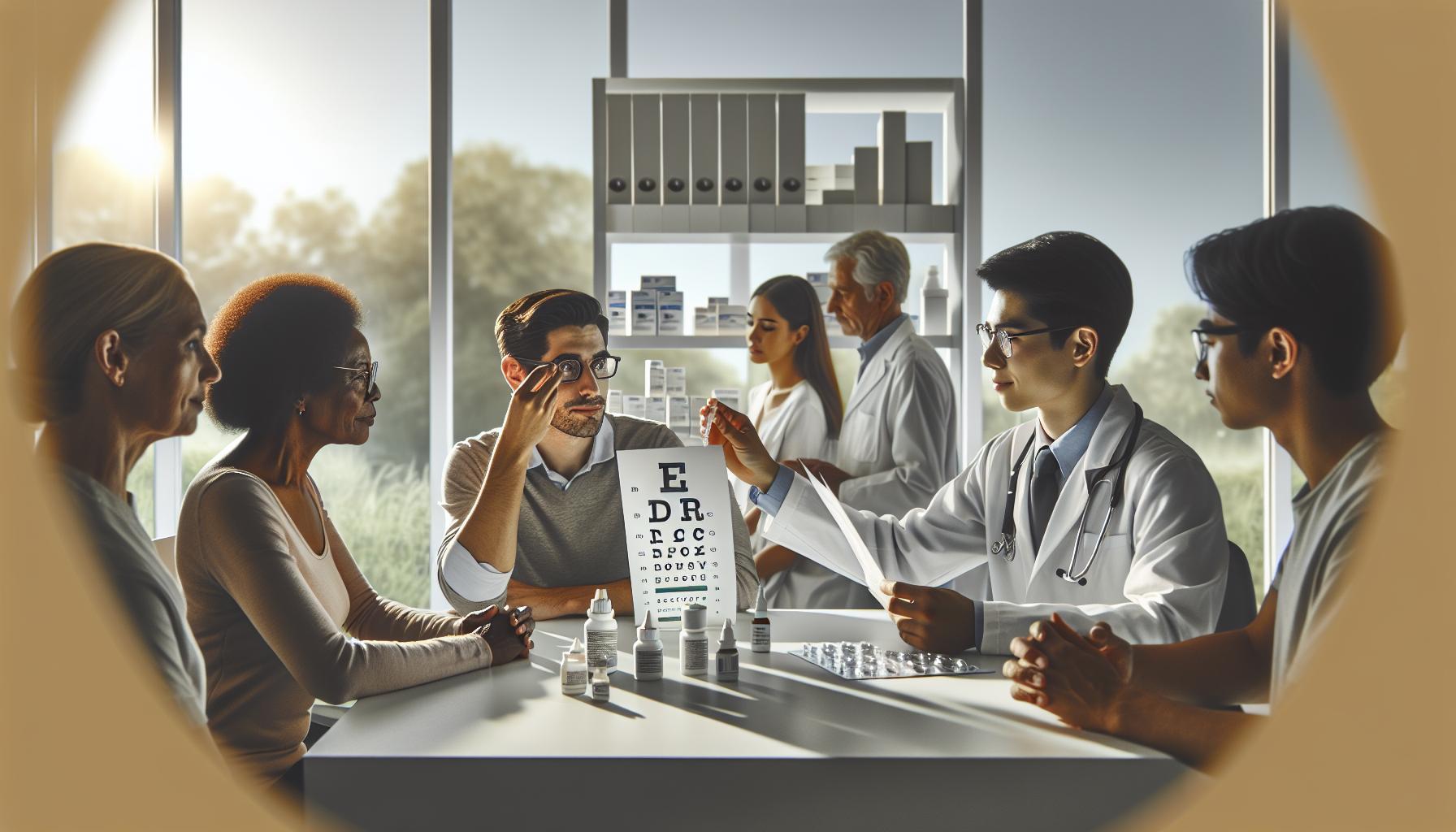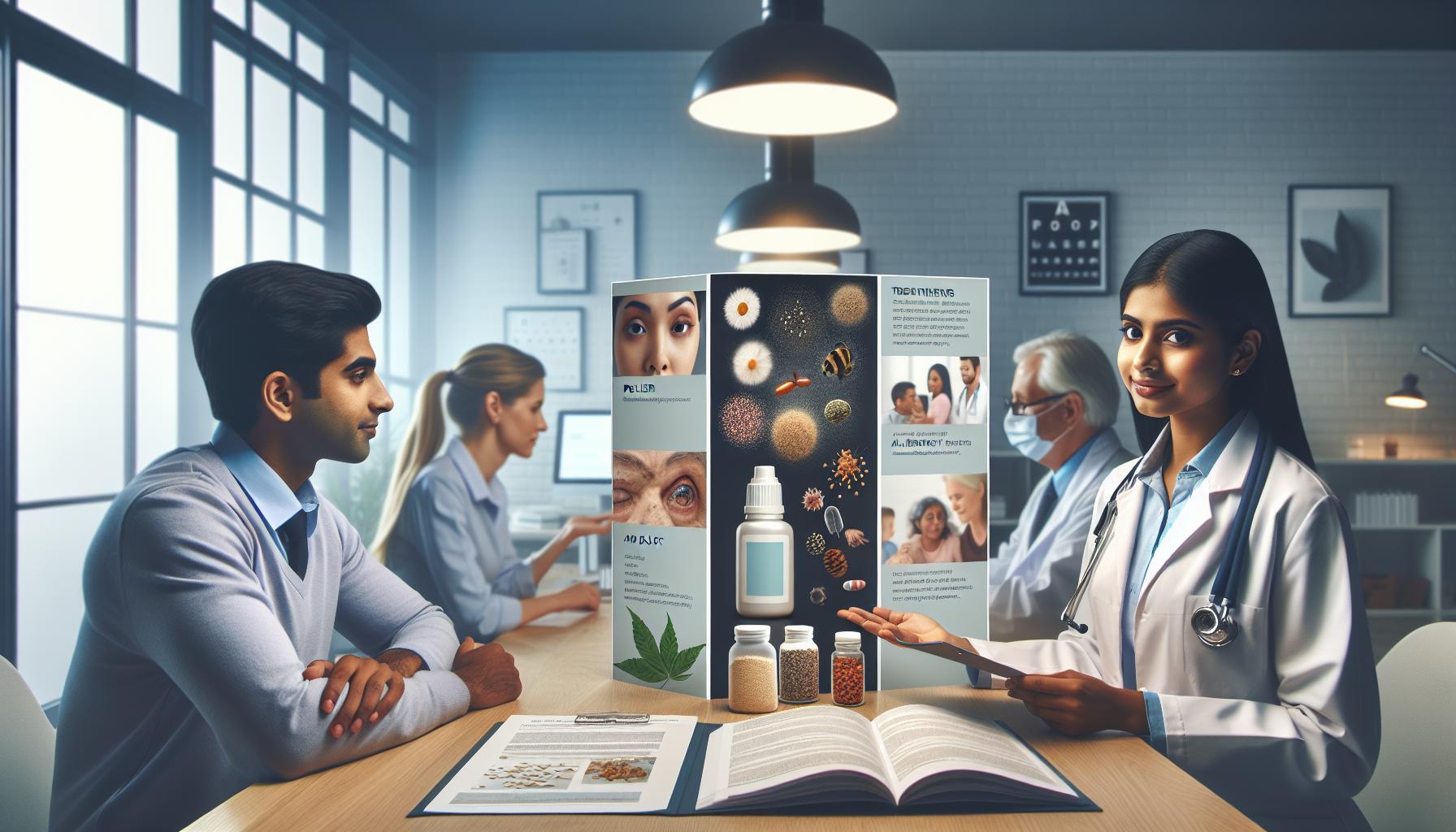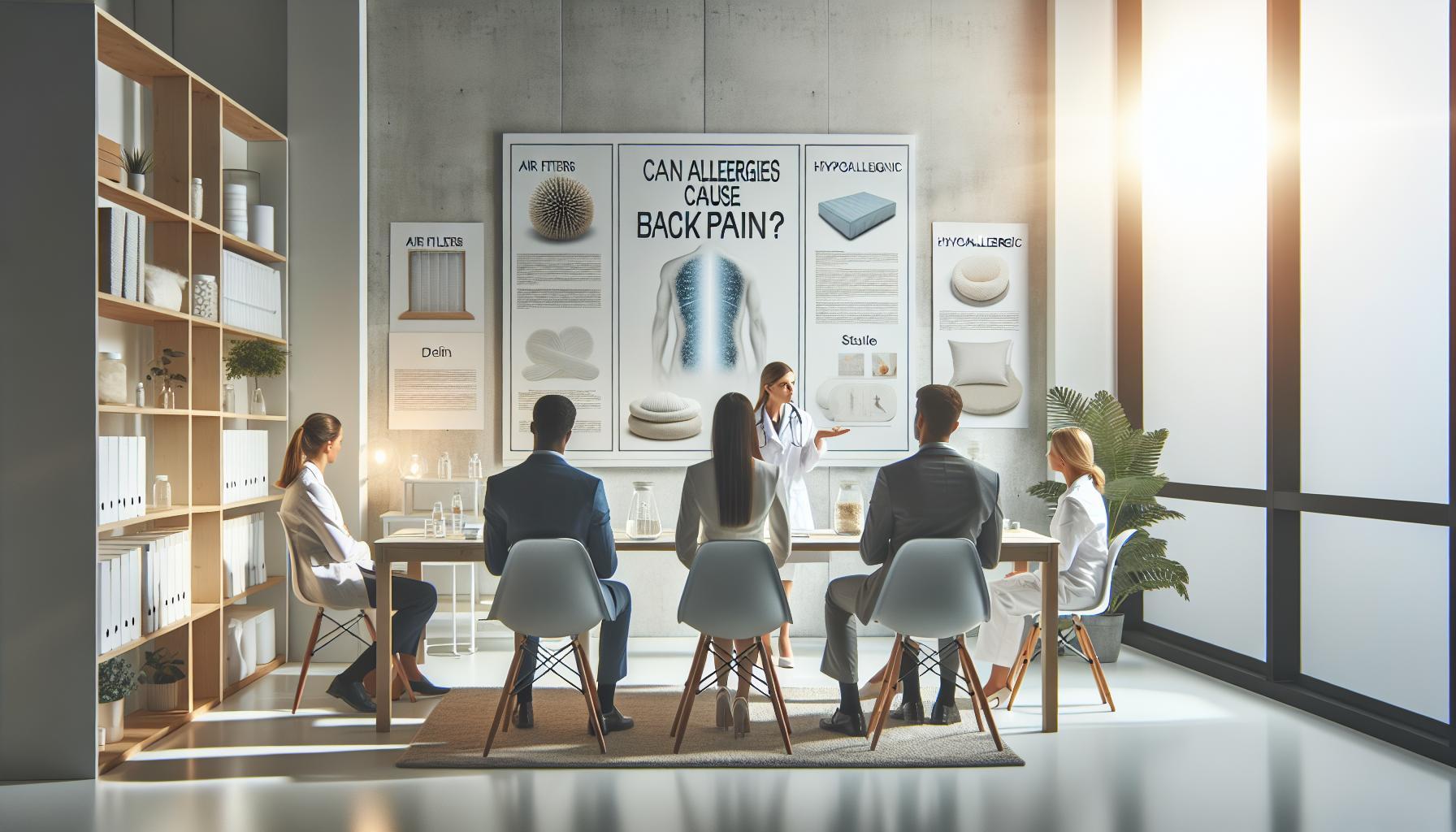Did you know that allergic reactions can extend beyond sneezing and itchy eyes? For many, allergies can potentially lead to uncomfortable conditions like styes-small, painful lumps on the eyelid caused by infected oil glands. Understanding the connection between allergies and eye health is crucial, especially for those who frequently battle seasonal allergies or sensitivities to certain substances.
As allergies trigger our immune system, they can also cause inflammation and irritation that may affect the eyes. This connection raises important concerns for anyone experiencing allergic symptoms, especially when it comes to maintaining eye comfort and health. If you’ve ever wondered how your allergies might be impacting your eyes or are seeking strategies to alleviate these dual challenges, you’re not alone. Dive deeper to uncover how to manage these issues and protect your eye health effectively.
Understanding the Connection Between Allergies and Styes
Research indicates a significant link between allergies and eye health, particularly in how allergic reactions can lead to the formation of styes, which are painful lumps on the eyelid caused by blocked glands. Allergies can trigger inflammation in the eyes, leading to symptoms like redness, itching, and swelling. This inflammatory response can cause the eyelid glands, particularly the meibomian glands, to malfunction, creating an environment conducive to bacterial growth and blockage. When these glands become obstructed, they may result in a stye forming. Understanding this connection is crucial for managing both allergies and eye health effectively.
For individuals suffering from allergies, the presence of allergens like pollen, dust mites, or pet dander can exacerbate eye conditions. Symptoms such as excessive rubbing of the eyes or prolonged inflammation can increase the risk of developing styes. It’s essential to address these allergies through appropriate management strategies to minimize their impact on overall eye health. For instance, keeping windows closed during high pollen seasons, using air purifiers, and frequently cleaning surfaces in the home can significantly decrease allergen exposure.
Here are some practical steps to reduce stye risks related to allergies:
- Avoid Eye Rubbing: While it may be tempting to alleviate itchy eyes by rubbing them, this can lead to more irritation and increase the risk of infection.
- Use Hypoallergenic Products: Choose hypoallergenic cosmetics and skin care products to minimize irritation around the eyes.
- Maintain Eye Hygiene: Regularly wash your eyelids with a gentle cleanser to keep the area clean and free from allergens.
- Consult with Healthcare Providers: Talk to an allergist or an eye care professional for personalized treatment plans, which may include antihistamines or steroid eye drops.
By implementing these preventive measures and keeping a keen eye on allergic reactions, individuals can greatly reduce the incidence of styes and promote better eye health. Recognizing the symptoms and understanding the relationship between allergies and styes empowers individuals to take control of their health. If someone is experiencing frequent styes or other eye-related issues due to allergies, seeking medical guidance is essential for effective management.
How Allergic Reactions Impact Eye Health
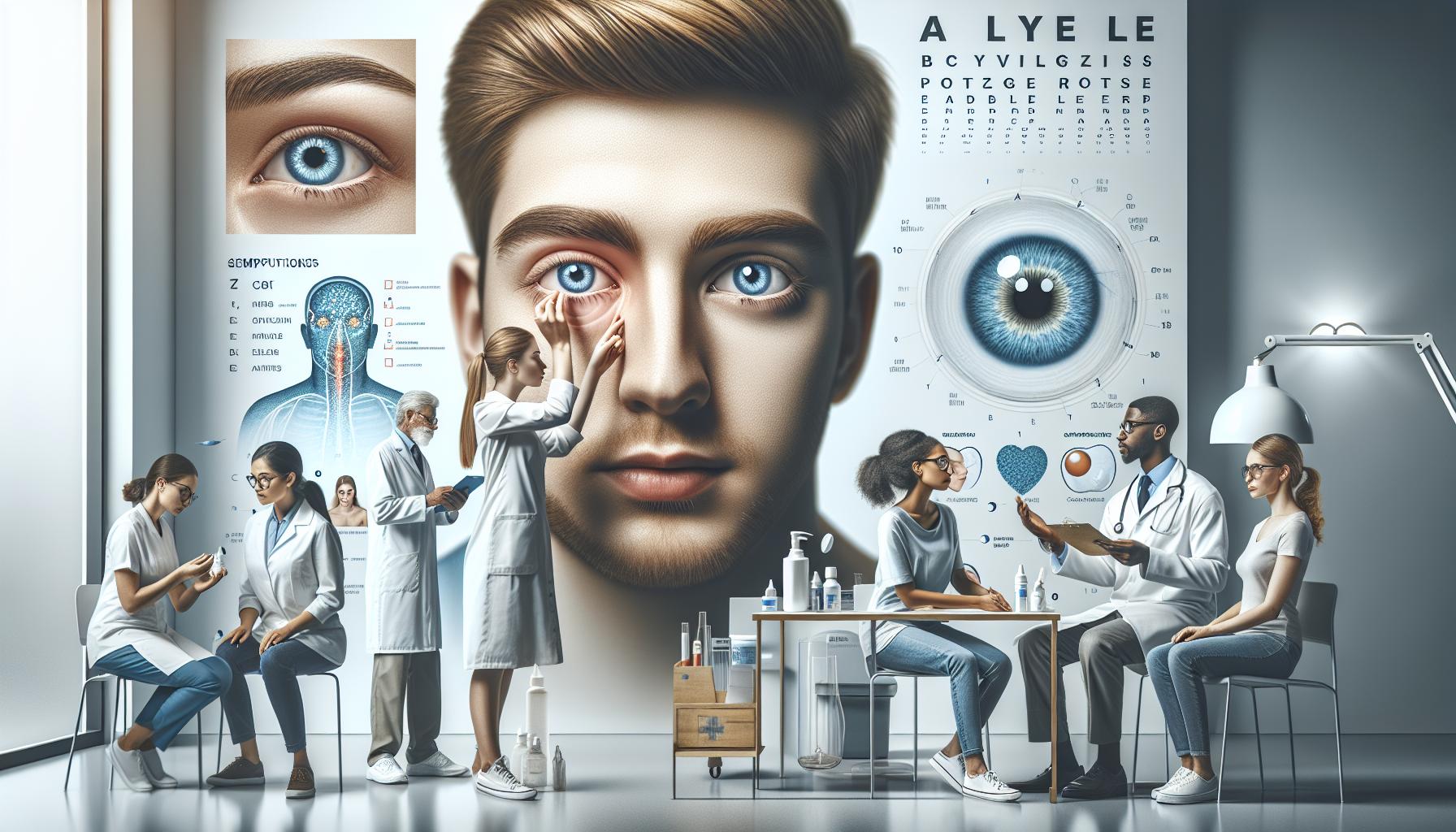
Experiencing allergy symptoms can be more than just a nuisance, as they can significantly impact eye health and wellness. Allergic reactions often trigger a cascade of inflammatory responses in the body, particularly in sensitive tissues like those found in the eyes. When allergens such as pollen or pet dander come into contact with the eyes, they can cause a range of symptoms including redness, swelling, and intense itching. This inflammation is not just uncomfortable; it also affects the overall function of eye structures, making individuals more susceptible to complications like styes.
The connection between allergies and eye conditions is multifaceted. For instance, when allergens provoke a response, individuals frequently rub their eyes in an attempt to alleviate discomfort. This rubbing can exacerbate irritation and contribute to the blockage of eyelid glands, particularly the meibomian glands responsible for secreting oil that lubricates the eye. Once these glands are obstructed, it sets the stage for bacterial growth, leading to the formation of styes-painful lumps that can disrupt daily activities. Managing allergy symptoms effectively is crucial to prevent the cycle of irritation and infection that can compromise eye health.
To mitigate the impact of allergies on eye health, proactive steps can be taken. Implementing simple lifestyle changes can significantly reduce allergens in the environment. For example, utilizing air purifiers, keeping windows closed during peak pollen seasons, and routinely cleaning home surfaces can help decrease the presence of irritants. Additionally, maintaining eye hygiene is essential; gently cleansing the eyelids can help keep these areas free from allergens and reduce the risk of mechanical irritation that can cause styes.
Understanding how allergic reactions affect eye health empowers individuals to take control of their well-being. Recognizing that effective allergy management can make a difference in preventing eye complications is key. Over-the-counter antihistamines and allergy drops can alleviate symptoms, while also allowing for a more comfortable and irritation-free experience. By embracing these strategies, individuals can safeguard their eye health and reduce the likelihood of developing pesky styes, enabling them to enjoy daily life more fully.
Common Symptoms of Allergies That Affect Eyes
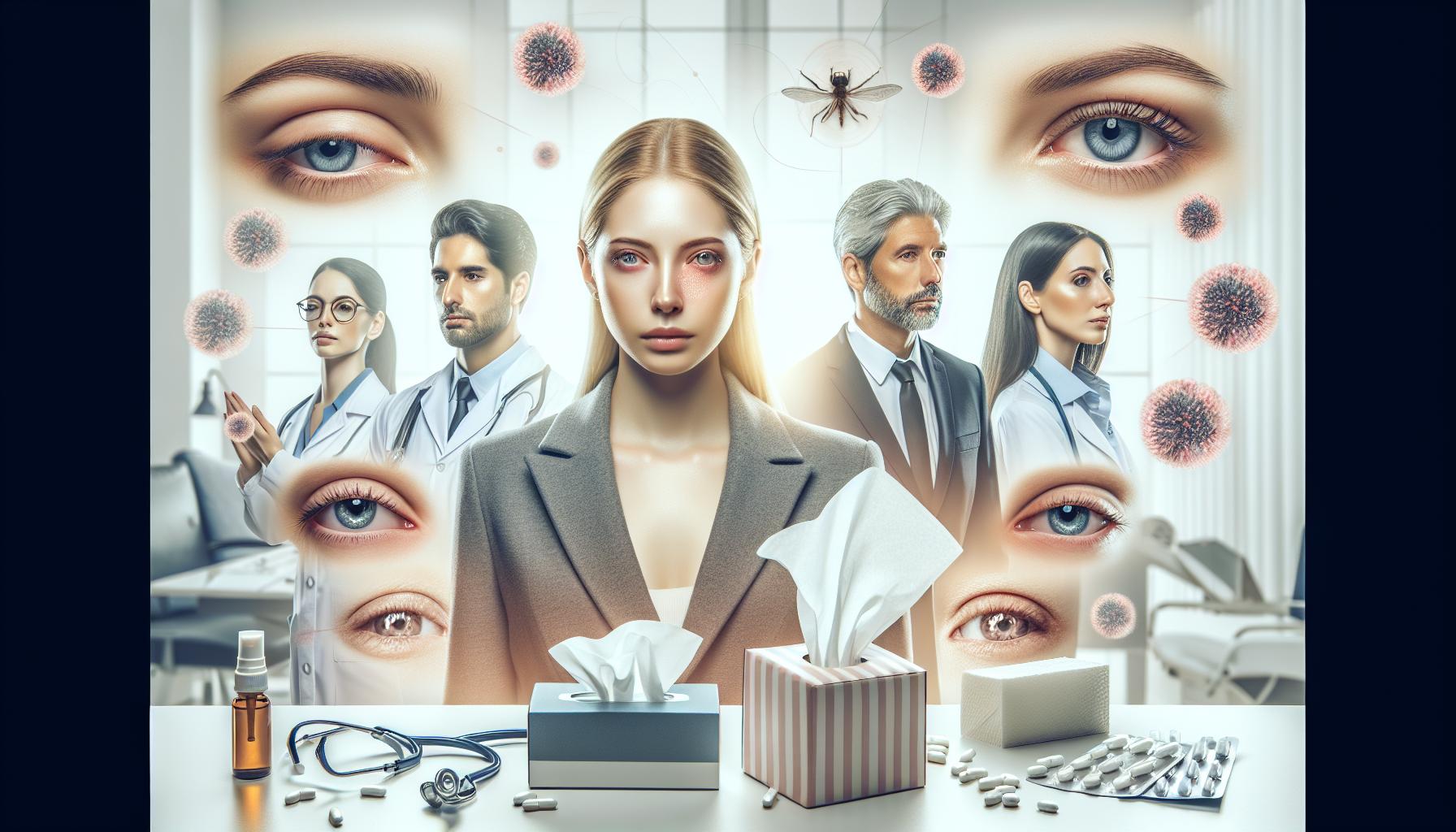
Allergies can manifest in various ways, but when they impact the eyes, the symptoms can be particularly uncomfortable and disruptive. Individuals with allergic reactions may experience a range of eye-related symptoms that can diminish quality of life. Recognizing these signs early is vital for effective management and to prevent complications such as styes.
Common symptoms associated with eye allergies include:
- Itching: Intense itching around the eyes is often one of the most distressing symptoms of allergies. This urge to rub or scratch can further irritate the eyes and contribute to inflammation.
- Redness: Allergic reactions can lead to dilated blood vessels in the eye, causing noticeable redness. This can make the eyes appear tired or inflamed.
- Swelling: Swelling of the eyelids, known as eyelid edema, can occur, giving the eyes a puffy appearance. This swelling can be accompanied by an uncomfortable sensation of heaviness.
- Tearing: Allergies can trigger an overproduction of tears, resulting in watery eyes that may also lead to feelings of discomfort and blurred vision.
- Burning Sensation: A burning or stinging feeling in the eyes is a common response to allergens, making it difficult for individuals to focus on daily tasks.
It’s essential to differentiate these allergy symptoms from other eye issues. In many cases, allergies can lead individuals to rub their eyes, which may exacerbate irritation and block the glands around the eyelids, potentially leading to the development of styes. Taking proactive steps to manage symptoms can help stave off not only discomfort but also the risk of further complications. Simple solutions like using cold compresses to soothe itching, regularly cleansing the eyelids, and avoiding known allergens, such as pollen or pet dander, can significantly improve eye health.
By understanding these symptoms and maintaining good eye hygiene, allergy sufferers can take control of their comfort and health, paving the way for better overall well-being.
Identifying a Stye: Causes and Symptoms
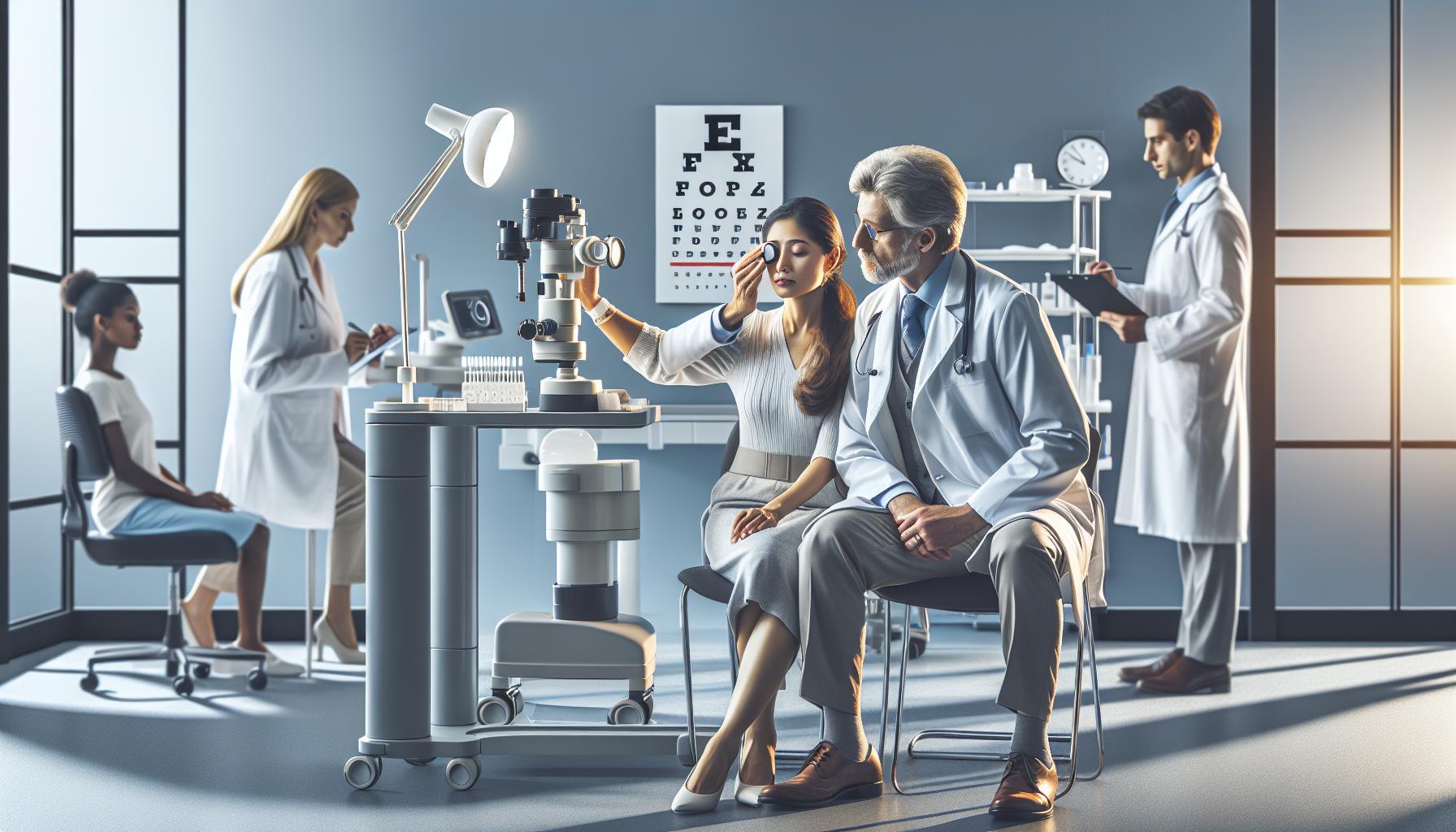
A stye, medically known as a hordeolum, is a common yet distressing condition characterized by a localized infection of the eyelid’s oil glands or hair follicles. Typically, these infections arise from bacterial invasion, often the result of rubbing your eyes when they’re itchy or irritated due to allergies. When your eyes are the focus of continuous irritation-from allergens like pollen or dust-your response may be to frequently touch or rub them, inadvertently increasing the chances of developing a stye.
Key symptoms of a stye include:
- Pain or tenderness: A stye often begins as a painful bump on the eyelid, which may feel tender when touched.
- Swelling: The affected eyelid typically becomes swollen and may appear red or inflamed.
- Increased tearing: Styes can cause excessive tearing due to irritation in the eye area.
- Pus or drainage: In some cases, a stye may develop a head, leading to fluid or pus draining from the bump.
The connection between allergies and styes is noteworthy; allergens can trigger itchiness and discomfort, leading to excessive rubbing of the eyes or eyelids, which can create a perfect environment for bacteria to thrive. Recognizing the initial signs of a stye is crucial for effective management. Besides observing for swelling and tenderness, pay attention to any changes in your eyelids, such as the appearance of small red bumps or increased discomfort. Implementing good hygiene practices, such as washing your hands before touching your face or eyes, can significantly reduce the risk of developing a stye, especially when you’re battling allergies.
If a stye forms, initial at-home treatments can include warm compresses applied to the eyelid several times a day to promote drainage and relieve discomfort. However, it’s crucial to avoid squeezing or forcing it to burst, which can worsen the infection. If symptoms persist or worsen, seeking medical advice is recommended to prevent complications and ensure proper treatment. Understanding these visual and physical cues can empower you to act quickly, improving both your eye health and overall well-being.
The Role of Allergens in Eye Infections
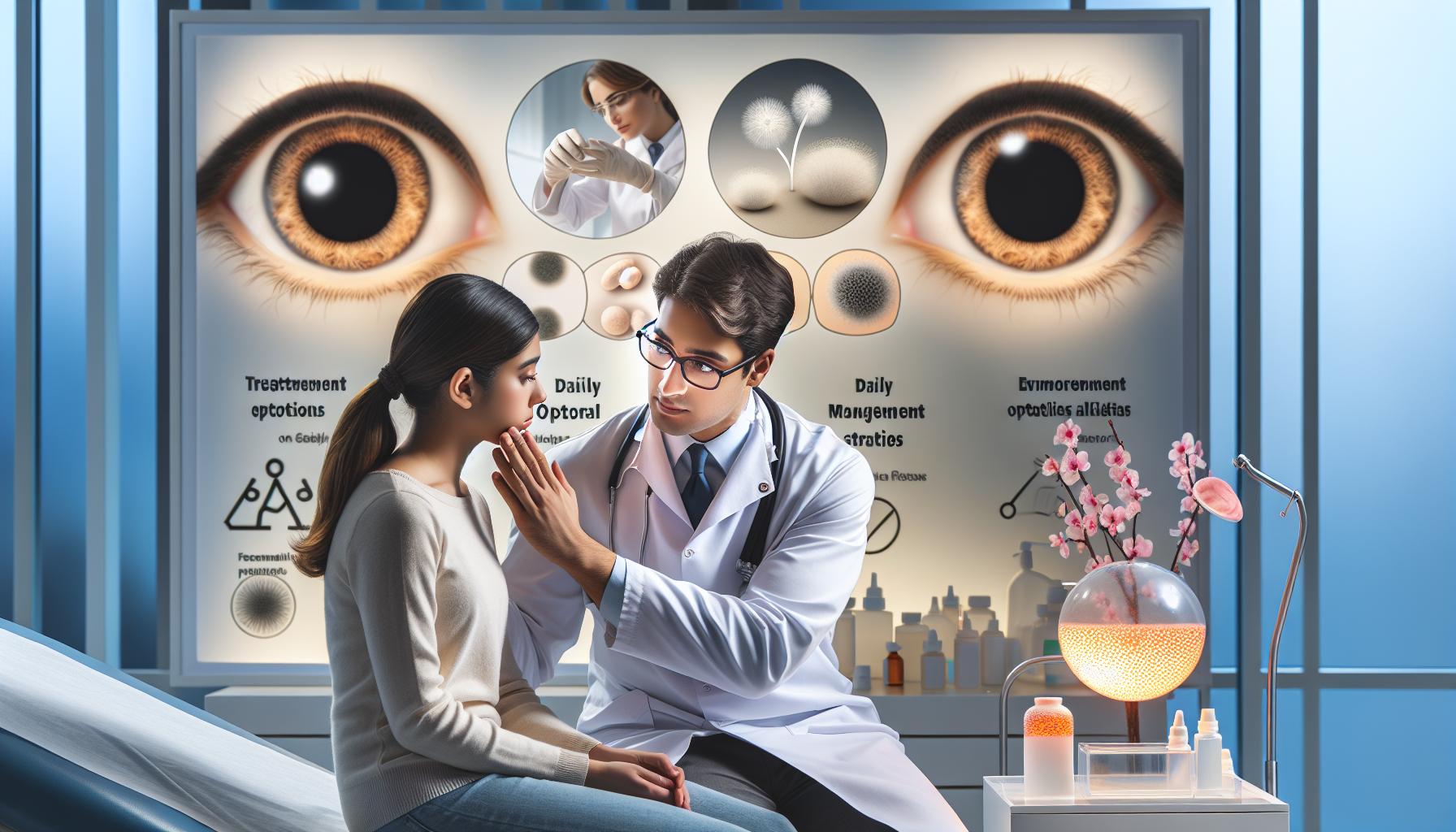
The presence of allergens in the environment plays a significant role in triggering eye infections, particularly for individuals predisposed to allergies. Allergens such as pollen, dust mites, pet dander, and mold can cause the eyes to become red, itchy, and inflamed, prompting frequent rubbing. This incessant irritation not only leads to discomfort but can also compromise the integrity of the eyelid, making it easier for bacteria to invade and cause infections like styes.
When allergens enter the eye, they activate the immune system, resulting in a cascade of inflammatory responses. This manifests as allergic conjunctivitis, characterized by symptoms like tearing and redness. As the eyes become increasingly sensitive due to this irritation, the likelihood of behaviors such as rubbing or touching increases, which promotes the transfer of bacteria from the hands to the eyelids. This cyclical relationship can set the stage for bacterial colonization in the oil glands of the eyelids, resulting in a stye.
To mitigate the impact of allergens on eye health, proactive steps are essential. Regularly washing hands and avoiding unnecessary eye contact can significantly decrease the risk of infections. For those susceptible to allergies, maintaining a clean environment-such as using air purifiers and regularly washing bedding-can reduce allergen exposure. Moreover, individuals should be aware of their specific triggers and take preventive measures accordingly, such as using antihistamines or saline eye drops to soothe irritation before it escalates.
In essence, understanding how allergens contribute to eye infections provides valuable insight for management. By taking conscious actions to limit allergen exposure and practicing good hygiene, individuals can safeguard their eye health and reduce the occurrence of styes, effectively breaking the cycle of irritation and infection.
Are Allergies a Risk Factor for Styes?
Frequent allergy sufferers often grapple with a range of discomforts, but few realize the connection between their allergic reactions and the development of styes. A stye, a painful bump on the eyelid caused by an infection in the oil glands, can indeed emerge as a complication of allergic reactions. When allergens like pollen, dust mites, or pet dander irritate the eyes, it triggers a series of events that create an environment ripe for infection. The constant itchiness and discomfort can lead individuals to rub their eyes more frequently, inadvertently transferring bacteria from their hands to the eyelid area.
The relationship between allergies and styes can be further understood through the body’s response to allergens. Exposure to allergens typically results in inflammation and increased mucus production, both of which can contribute to the clogging of oil glands in the eyelids. When these glands become blocked, the risk of infection rises significantly. It is common for individuals with hay fever, for example, to develop styes during peak pollen seasons due to the increased contact with allergens and the subsequent eye irritation.
To effectively reduce the risk of developing styes, individuals who are aware of their specific allergens should take actionable steps to manage their exposure. Here are some practical strategies:
- Avoid Rubbing Your Eyes: This is critical; use a clean tissue to dab at irritation instead.
- Wash Hands Frequently: Keeping hands clean minimizes the transfer of bacteria to the eyes.
- Use Antihistamines: Over-the-counter antihistamines can help control allergic reactions and reduce the need to touch the eyes.
- Cold Compresses: Applying these can soothe itchy eyes and decrease the urge to rub.
Additionally, maintaining a clean living environment-such as regularly cleaning surfaces where allergens accumulate and using air purifiers-can significantly lower the risk of both allergies and subsequent stye formation. By adopting these preventive measures, those with allergies can not only improve their overall eye health but also diminish the likelihood of developing frustrating and painful styes.
Effective Home Remedies for Styes Caused by Allergies
Swollen, painful, and sometimes embarrassing, styes can be a frustrating consequence of chronic allergies. Fortunately, there are several effective home remedies that can help alleviate the discomfort associated with styes, especially when they stem from allergic reactions. For many allergy sufferers, integrating these remedies into their routine may offer significant relief while minimizing the need for more invasive treatments.
Applying a warm compress is one of the most widely recommended methods for soothing a stye. By simply soaking a clean cloth in warm water, wringing it out, and placing it over the affected eyelid for 10-15 minutes several times a day, you can help to reduce inflammation and promote drainage of the clogged oil glands. This not only eases pain but also encourages the body to heal itself by facilitating better circulation.
Another simple yet effective approach involves maintaining adequate eye hygiene. Regularly cleaning the eyelids with diluted baby shampoo or a saline solution can help remove nearly any accumulated debris that might worsen irritation or contribute to infection. For those prone to allergies, establishing a gentle cleansing routine can significantly minimize the risk of styes.
In addition to these basic remedies, natural anti-inflammatory agents like chamomile tea bags can be applied to the eye area. After steeping and cooling the tea bags, place them over the stye for about 15 minutes. Chamomile possesses properties that can soothe irritation and promote healing. Furthermore, if allergy symptoms exacerbate the stye, using over-the-counter antihistamines can help alleviate the allergic response, thereby reducing the likelihood of eye rubbing and the potential for a stye to develop.
Lastly, while these home remedies can provide relief, it’s essential to prioritize allergies’ management as a whole by minimizing exposure to known allergens. By engaging in practices such as using air purifiers, regular cleaning, and educating oneself about seasonal allergens, individuals can create a more conducive environment for their eye health.
When to Seek Professional Help for Eye Issues
A stye may appear as a small bump on your eyelid, but it can bring a surprising amount of discomfort and uncertainty, especially when allergies are in the mix. It’s important to recognize when self-care measures are insufficient, and professional medical intervention is needed. If you find that your stye persists beyond a week despite home treatments, or if it worsens over time, it’s time to consult an eye care specialist. Persistent styes can indicate underlying issues that require expert evaluation, such as chronic blepharitis or underlying gland dysfunction.
In addition to the duration of symptoms, certain warning signs warrant immediate attention. If you experience significant swelling that impacts your ability to see, severe pain, or if the stye starts to spread to surrounding areas of your face, seek help promptly. An infection that spreads beyond the eyelid can lead to complications. Another crucial factor to consider is any accompanying vision changes. Blurred vision, increased sensitivity to light, or any visual disturbances should never be ignored. These can signal more serious conditions that need urgent care.
Moreover, if you’re frequently battling styes, it’s advisable to discuss this with your healthcare professional. An allergist can help identify specific allergens contributing to your eye issues, while an ophthalmologist can assess your eye health and recommend appropriate treatments. They might suggest preventative measures or medications that align with your allergy management plan. By understanding the connection between your allergies and eye health, you can not only reduce the frequency of styes but also enhance your overall well-being.
Being proactive about eye health means not waiting until discomfort escalates. If you are unsure whether your symptoms require professional help, don’t hesitate-contacting a healthcare provider can provide peace of mind and set you on the right path toward relief and recovery. Prioritizing your eye health empowers you to navigate your daily life more comfortably and confidently, even amid allergy challenges.
Preventative Measures Against Allergies and Styes
Allergies can have a surprising impact on eye health, leading not only to discomfort but also to conditions like styes. Understanding how to mitigate these risks through effective preventative measures can significantly improve your quality of life. Implementing simple, practical strategies can be a game changer for those sensitive to allergens, helping you maintain clear eyes and a healthy eyelid area.
To start, it’s essential to manage your environment. Keep your living space clean to minimize dust, pet dander, and pollen. Regularly wash bedding in hot water, vacuum with a HEPA filter, and use air purifiers to reduce airborne allergens. Additionally, creating an allergy-friendly zone, such as a bedroom devoid of pets and electronic devices that collect dust, can provide a sanctuary to retreat to during peak allergy seasons.
Having a solid eye hygiene routine can also prevent the occurrence of styes and reduce irritation from allergens. Avoid rubbing your eyes, as this can introduce bacteria and exacerbate allergic reactions. Instead, consider using a clean, damp cloth to gently wipe your eyelids and lashes. Incorporating lubricating eye drops can help rinse away irritants and provide relief from dryness. If you wear makeup, ensure that all products are hypoallergenic, and remove makeup thoroughly at the end of the day to prevent clogging the glands around your eyes.
Another proactive approach is consultation with healthcare professionals. An allergist can conduct tests to identify specific allergens, leading to targeted strategies for avoidance. They may also suggest immunotherapy as a long-term solution. Meanwhile, an ophthalmologist can evaluate your eye health and prescribe medications, such as antihistamines or topical treatments, that specifically target allergy symptoms affecting the eyes.
Incorporating these preventative measures not only addresses allergies directly but also supports overall eye health. With awareness and proactive care, you can significantly alleviate the discomfort associated with allergic reactions and their potential to cause styes, paving the way for clearer, more comfortable vision.
The Importance of Eye Hygiene for Allergy Sufferers
Maintaining proper eye hygiene is crucial for individuals who suffer from allergies, as it can significantly reduce the risk of developing uncomfortable conditions like styes. When allergens such as pollen, dust, or pet dander invade your eyes, they can trigger itchy, watery eyes, leading many to rub or touch their eyes more frequently. This practice not only irritates the eyes further but also opens the door for bacteria and debris to enter, increasing the likelihood of infections and stye formation.
To cultivate an effective eye hygiene routine, start by implementing these practical steps:
- Wash Your Hands Regularly: Before touching your face or applying any products around your eyes, ensure that your hands are clean. This simple act helps minimize the transfer of allergens and bacteria to the sensitive eye area.
- Use a Gentle Cleanser: Opt for a hypoallergenic facial cleanser specifically designed for the eye region. Cleaning your eyelids and lashes gently with this cleanser can help remove allergens and reduce irritation.
- Keep Your Eye Area Dry: After cleaning, make sure to pat your eyelids dry carefully. Moist environments can encourage the growth of bacteria, increasing the risk of styes.
- Utilize Lubricating Eye Drops: To flush out allergens and soothe irritation, consider using preservative-free lubricating eye drops. These can also help maintain moisture in your eyes, combating dryness that might otherwise lead to further rubbing.
- Avoid Eye Makeup: If allergies are particularly troublesome, it might be wise to forego eye makeup during allergy season. Products can trap allergens and irritate the eyes, exacerbating symptoms.
In addition to these practices, it’s important to be mindful of the materials in your environment. Regularly wash pillowcases and bedding in hot water to eliminate dust mites and allergens. If you wear contact lenses, ensure they are cleaned thoroughly and consider switching to daily disposables during peak allergy seasons to reduce the risk of irritation.
By prioritizing eye hygiene, individuals with allergies can better protect their eye health while minimizing the chances of developing styes and other complications. Simple adjustments, like those described here, can lead to more comfortable and clearer vision, allowing you to enjoy your daily activities without the discomfort associated with allergic reactions.
Exploring Medications for Eye Allergy Relief
Managing eye allergies effectively can often make the difference between discomfort and relief, especially for those predisposed to conditions like styes. When allergens invade the eye area, they can cause significant irritation and inflammation, leading to symptoms that affect daily life. Fortunately, a range of medications is available to combat these symptoms and support eye health.
Over-the-counter antihistamines are commonly used to relieve itchy, watery eyes. Medications such as artificial tears can help wash away allergens and hydrate the eyes, providing instant relief. For those facing persistent symptoms, antihistamine eye drops like ketotifen or olopatadine can significantly reduce inflammation and irritation. They are particularly effective since they target the allergic reaction right at the source, blocking histamines that cause discomfort.
In more severe cases, prescription options such as mast cell stabilizers may be recommended. These medications, like nedocromil or cromolyn sodium, work by preventing the release of histamine and other chemicals that cause allergies. For individuals dealing with extreme allergic reactions, corticosteroid eye drops can be a short-term solution under the guidance of a healthcare provider. These drops help to quickly reduce inflammation, although they come with a risk of side effects, such as increased intraocular pressure or cataracts with long-term use.
To personalize your approach, consider keeping an allergy diary to track symptoms and their triggers. This method can help you and your healthcare provider identify which medications or treatments yield the best results for your specific allergy profile. Always consult with a healthcare professional before starting any new medication, as they can provide tailored advice based on your unique health needs. By utilizing these medications appropriately and integrating them with good eye hygiene practices, you can take proactive steps to protect your eye health and minimize the likelihood of developing styes due to allergic reactions.
Managing Allergies to Reduce Stye Occurrence
Managing allergies can be a pivotal factor in reducing the occurrence of styes, particularly for those sensitive to environmental triggers. When allergens like pollen, dust mites, or pet dander enter the eyes, they provoke an inflammatory response that can lead to symptoms such as redness, itching, and excessive tearing-all of which can exacerbate the conditions that foster the formation of styes. By actively managing these allergies, you can create a healthier environment for your eyes and ultimately decrease the likelihood of developing these uncomfortable bumps.
One effective approach is to identify and minimize exposure to specific allergens. Keeping a detailed allergy diary can help you track symptoms and potential triggers, such as particular trees, grasses, or even household items. This insight allows for targeted avoidance strategies, such as using air purifiers to reduce indoor allergens or adopting an effective cleaning regimen that includes regular vacuuming with HEPA filters. Additionally, consider implementing lifestyle changes like showering and changing clothes after spending time outdoors, especially during high pollen seasons, to limit the allergens your eyes come into contact with.
Incorporating over-the-counter medications can also aid in managing allergic reactions. Antihistamines and decongestants can alleviate symptoms and reduce inflammation. When allergy symptoms are controlled, the risk of rubbing or rubbing your eyes-common responses to irritation-is minimized, greatly lowering the chance of stye development. Eye drops specifically designed for allergic conjunctivitis can soothe irritation directly in the eye, providing instant relief.
Lastly, maintaining good eye hygiene is essential for allergy sufferers. Regularly cleaning your face and eyelids can remove residual allergens, reducing irritation and subsequent risks associated with stye formation. Simple practices such as gentle eyelid scrubs or warm compresses can effectively keep your eyelids clear of debris while promoting overall eye health. By taking these proactive steps, you’re not just managing your allergies-you’re safeguarding your eyes against the discomfort of styes, allowing you to live more comfortably and confidently.
Frequently Asked Questions
Q: Can allergies directly cause styes?
A: Yes, allergies can lead to styes by causing inflammation and irritation of the eyes, which may obstruct glands around the eyelids. When these glands become clogged due to allergies, styes can develop. Maintaining eye hygiene is crucial for prevention.
Q: What are the common symptoms of a stye?
A: Common symptoms of a stye include redness, swelling, pain around the eyelid, and the formation of a pus-filled bump. These symptoms may worsen with allergies, which can increase irritation. For more details on stye symptoms, refer to the section on identifying a stye.
Q: How can I prevent styes caused by allergies?
A: To prevent styes linked to allergies, practice good eye hygiene, avoid rubbing your eyes, and manage allergy symptoms effectively. Regularly clean your eyelids with warm compresses and consult an allergist for tailored management strategies.
Q: Are styes more common in people with allergies?
A: Yes, individuals with allergies are at a higher risk for styes because the inflammation and mucus production can block eyelid glands. This makes it essential for allergy sufferers to be vigilant about their eye health and hygiene.
Q: What is the best home remedy for a stye caused by allergies?
A: A warm compress is the best home remedy for relieving discomfort from a stye. It helps reduce inflammation and unclogs the affected glands. Applying it for 10-15 minutes several times a day can provide relief.
Q: When should I see a doctor for a stye related to allergies?
A: Consult a doctor if a stye does not improve within a few days, worsens, or is accompanied by vision changes. Persistent symptoms could indicate an underlying issue requiring medical intervention, such as infections or severe allergic reactions.
Q: How do allergens affect eye health beyond causing styes?
A: Allergens can lead to symptoms like itchiness, redness, and watery eyes, which may compromise overall eye health. Chronic inflammation can affect vision quality and increase susceptibility to infections. Managing allergies is vital to maintaining healthy eyes.
Q: Can over-the-counter medications help with styes and allergies?
A: Yes, over-the-counter antihistamines and eye drops can help alleviate allergy symptoms, potentially reducing the risk of styes. Always consult with a healthcare provider for recommendations tailored to your specific needs and conditions.
For additional information, feel free to explore sections on effective home remedies and preventative measures against allergies and styes.
The Conclusion
Understanding the connection between allergies and styes is crucial for maintaining your eye health. If you’ve experienced itchy eyes or discomfort recently, consider seeking advice from a healthcare professional. Don’t wait-take control of your eye health today!
For more insights, check out our articles on managing allergic reactions and tips for maintaining eye hygiene. You may also want to explore our guide on effective treatments for styes. Remember, your eyes deserve the best care, and ensuring you’re informed can make all the difference.
We welcome your thoughts-share your experiences in the comments! For ongoing tips and updates, sign up for our newsletter and stay connected with our community. Let’s prioritize our vision together and empower each other on this journey!

